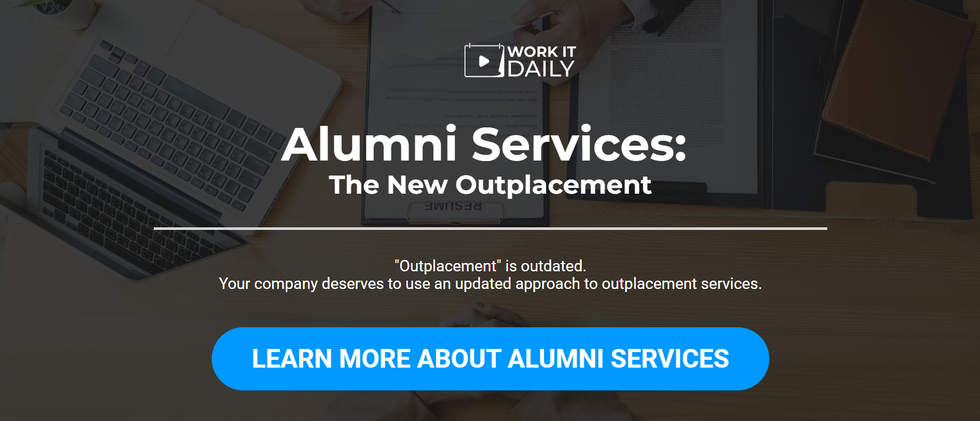Alumni Services: The New Outplacement Your Company Needs

Does your company currently provide outplacement services for laid-off employees? Maybe you do, but only for executives or C-suite members. No matter your company’s outplacement strategy, it’s time for your organization to invest in modern outplacement servicesâbecause your company alumni deserve it.
Outplacement services offer structured support to outgoing employees, helping them transition smoothly into new career opportunities. Outplacement is also an investment that can yield numerous benefits for a company, contributing to overall organizational success during periods of change or downsizing.
Benefits Of Outplacement Services

For laid-off employees, outplacement services offer a range of valuable benefits. These services are designed to provide practical and emotional support, helping individuals navigate the challenges of finding new employment opportunities. The best outplacement services empower employees with the tools, knowledge, and emotional assistance needed to successfully navigate a job search or career transition after a layoff and move forward with confidence and optimism.
For a company, investing in outplacement services reflects a commitment to ethical and responsible business practices, supporting departing employees, and reinforcing a positive employer brand, all of which can contribute to the long-term success of the organization.
Benefits for Employees:
- Personalized guidance and assistance with job searching, resume and cover letter writing, interview preparation, and networking.
- Access to training and development resources that can enhance their skills and marketability in a competitive job market.
- Emotional support and guidance to help maintain confidence and motivation during a potentially challenging period.
- Access to networking events, job fairs, and industry connections.
- Targeted assistance based on their unique skills, experience, and aspirations.
- Quicker results than if they were navigating the process on their own due to expert guidance and resources.
- Sense of closure and support that allows them to leave their previous job on a positive note and foster a sense of gratitude towards their former employer.
Benefits for Your Company:
- Accelerates the re-employment process for laid-off employees, reducing the financial and emotional strain on them and their families.
- Boosts morale among remaining staff by demonstrating a commitment to the well-being of departing employees.
- Enhances the company’s reputation and preserves its employer brand from positive word-of-mouth from departing employees, which can help attract top talent in the future and mitigate negative publicity.
- Maintains productivity and engagement levels among remaining staff, as they perceive that the company values its workforce, even during challenging times.
- Leads to shorter unemployment periods for laid-off employees, potentially reducing the company’s financial burden related to severance packages and unemployment insurance.
- Minimizes the risk of potential legal actions by showing that the company has taken steps to support employees during layoffs.
- Contributes to a positive workplace/organizational culture by showcasing the company’s commitment to its values and fostering a sense of loyalty among both current and former employees.
The Problem With Traditional Outplacement Services
Traditional outplacement services are expensive. Most start-ups and newer companies can’t afford to invest in traditional outplacement services for laid-off employees, and larger companies might be hesitant to invest due to the cost, especially when hundreds or thousands of employees might be laid off at one time.
Individual coaching is the most expensive type of coaching available with traditional outplacement services. A company could opt for group coaching, which is typically a cheaper option, but that can be less customized, less confidential, and less effective.
Work It DAILY’s Alumni Services: A Modern Approach To Outplacement
We know that outplacement services have numerous benefits for both employees and companies. But the cost of traditional outplacement services is a major drawback. So, what’s the updated, modern solution?
Work It DAILY’s Alumni Services.
Work It DAILY, an expert-led, online, on-demand career coaching platform, can help your organization manage layoffs effectively at a fraction of the price of “traditional” outplacement services.
Services include:
- 24/7 access to our coaching team for questions and material reviews
- 24/7 access to a private online community
- Resume, cover letter, and LinkedIn reviews
- Interview preparation help
- Unlimited networking opportunities inside the platform
- Access to 14 exclusive online courses (over 200 hours of video content)





































